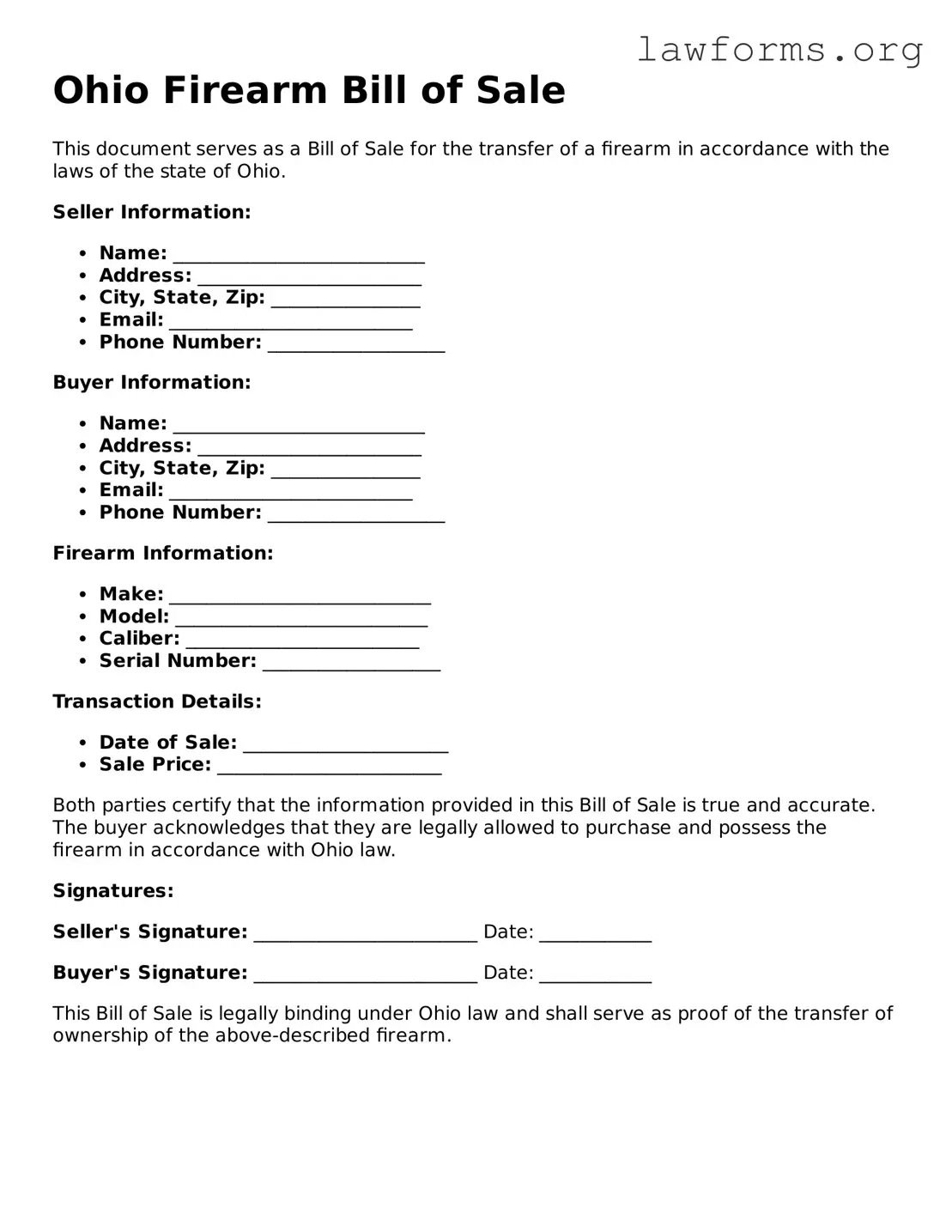Ohio Firearm Bill of Sale
This document serves as a Bill of Sale for the transfer of a firearm in accordance with the laws of the state of Ohio.
Seller Information:
- Name: ___________________________
- Address: ________________________
- City, State, Zip: ________________
- Email: __________________________
- Phone Number: ___________________
Buyer Information:
- Name: ___________________________
- Address: ________________________
- City, State, Zip: ________________
- Email: __________________________
- Phone Number: ___________________
Firearm Information:
- Make: ____________________________
- Model: ___________________________
- Caliber: _________________________
- Serial Number: ___________________
Transaction Details:
- Date of Sale: ______________________
- Sale Price: ________________________
Both parties certify that the information provided in this Bill of Sale is true and accurate. The buyer acknowledges that they are legally allowed to purchase and possess the firearm in accordance with Ohio law.
Signatures:
Seller's Signature: ________________________ Date: ____________
Buyer's Signature: ________________________ Date: ____________
This Bill of Sale is legally binding under Ohio law and shall serve as proof of the transfer of ownership of the above-described firearm.
